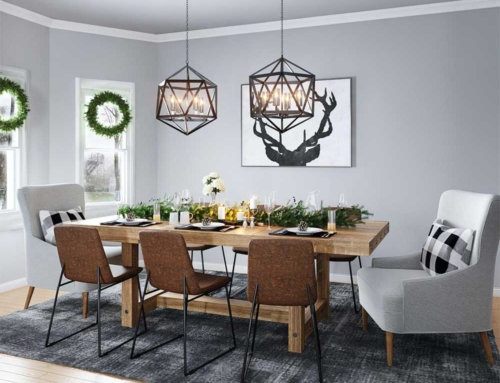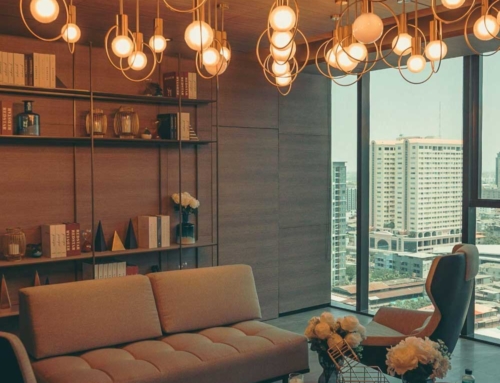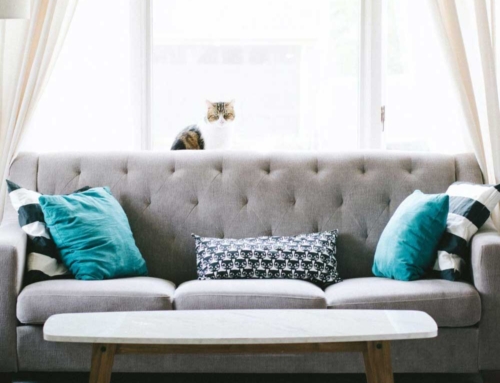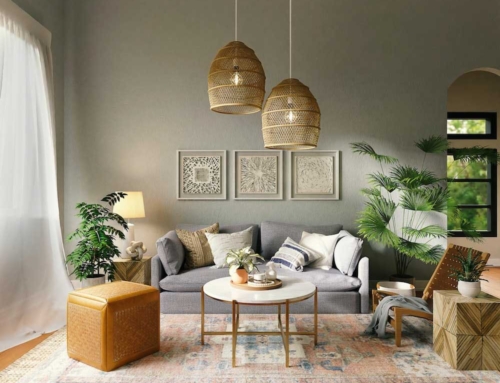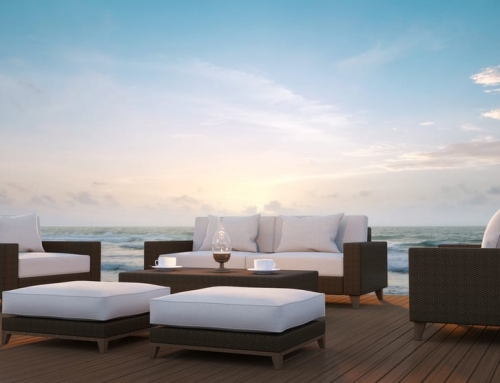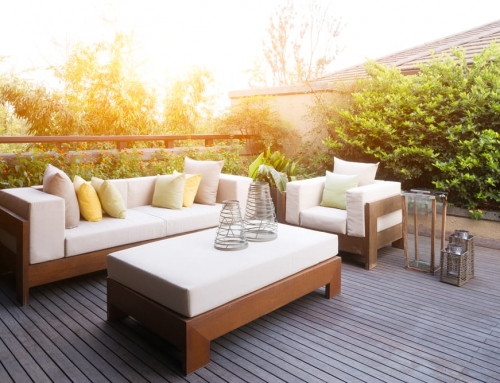Moving into a new home is an exciting adventure, but it can also be an overwhelming task. To help you make the journey as smooth as possible, we’ve created a comprehensive checklist to guide you through furnishing your new home.
This guide should assist you in making the right decisions, saving time, and ensuring that your new home is comfortable and functional.
A Checklist of Things to Get
Remember, this is a general guide, and you can always tailor the list to suit your unique needs and preferences.
Bedroom Essentials
1. The Perfect Bed
The bed is undoubtedly the most important piece of furniture in your bedroom. To ensure you have a great night’s sleep, invest in a high-quality mattress that suits your sleeping preferences and a sturdy bed frame that fits your room’s dimensions.
Don’t forget to choose the right size – a king or queen-size bed for couples, while a double or single bed will suffice for an individual.
2. Comfortable Bedding
Once you have your bed sorted, it’s time to focus on the bedding. A soft, cozy duvet or comforter is a must-have, along with a duvet cover or bedspread that matches your personal style.
Opt for breathable, high-quality materials like cotton, linen, or bamboo for maximum comfort. Remember to include a few pillows with varying firmness levels to accommodate different sleeping positions and preferences.
3. Stylish and Functional Nightstands
A nightstand is an essential piece of bedroom furniture that provides the perfect place to store bedtime necessities like books, glasses, and water.
Choose a nightstand with drawers or shelves for added storage space, and ensure it complements the style of your bed and other furniture. If you have limited space, consider wall-mounted shelves or floating nightstands as a space-saving alternative.
4. Window Treatments
Window treatments add style and privacy to your bedroom and help regulate temperature and light.
Choose from options like curtains, blinds, or shades, depending on your preference and budget. Go for blackout curtains or blinds if you’re sensitive to light or sheer curtains if you prefer diffused, soft natural light.
5. Ample Storage Space
A clutter-free bedroom is essential for a serene and relaxing atmosphere. Invest in clever storage solutions to keep your belongings organized and out of sight. A spacious wardrobe or closet is a must, along with a dresser or chest of drawers for storing clothes, accessories, and personal items. If you’re working with limited space, consider under-bed storage, multi-functional furniture, or wall-mounted shelves to maximize storage options.
6. A Cozy Seating Area
Creating a cozy seating area in your bedroom can be a great addition if you have space. A comfortable armchair or chaise lounge is perfect for relaxing, reading a book, or enjoying morning coffee. Pair it with a side table and a soft throw blanket to complete the look.
7. Personalized Décor and Accessories
Your bedroom should be a reflection of your personality and style. Add personal touches through artwork, photos, and decorative items that hold sentimental value. Choose a colour palette that makes you feel calm and relaxed, and incorporate it through your bedding, curtains, and accessories.
Add a cozy area rug for warmth and comfort, and remember some greenery through indoor plants or fresh flowers for a touch of nature.
8. A Full-Length Mirror
A full-length mirror is both a practical and stylish addition to your bedroom. It helps you get ready in the morning and visually expands your space, making it appear larger and brighter. Position your mirror on a wall or a door, or opt for a freestanding design that can be moved around as needed.
Living Room Must-Haves
1. A Comfortable Sofa
The centrepiece of any living room, a comfortable sofa sets the tone for the entire space. When selecting a sofa, consider the size of your living room and the number of people you’ll typically host. A sectional or L-shaped sofa is an excellent option for larger rooms or those who love entertaining, while a classic three-seater or loveseat may be a better fit for smaller spaces.
In terms of style, a neutral-coloured sofa with clean lines is a versatile choice that can easily be dressed up or down with throw pillows and blankets. Opt for a durable and easy-to-clean fabric, such as leather or microfiber, if you have young children or pets.
2. Accent Chairs
Accent chairs provide additional seating and an opportunity to introduce a pop of colour or pattern into your living room. Choose chairs that complement your sofa in size, shape, and style. For a cohesive look, opt for chairs with a similar colour palette or design elements.
3. Coffee Table
A coffee table is essential for anchoring your living room and providing a surface for drinks, snacks, and decorative items. When selecting a coffee table, consider the size of your sofa and the room’s overall layout. A rectangular or oval table works well with most sofa shapes, while a round or square table may be a better fit for sectionals or L-shaped sofas.
In terms of materials, a wooden coffee table adds warmth and natural touch to a living room, while a glass or metal table can create a sleek, modern look. If storage is a concern, consider a coffee table with drawers or shelves for added functionality.
4. Media Console
A media console is essential for housing your television, speakers, and other entertainment devices. Choose a console that is the appropriate size for your TV and provides adequate storage for your media components. Opt for a wall-mounted console or a built-in cable management system for a streamlined look.
5. Area Rug
An area rug helps to define the living room space and adds warmth, texture, and colour. When selecting a carpet, choose one large enough to accommodate all your furniture, including the front legs of your sofa and chairs.
In terms of style, a patterned rug can add visual interest and help to tie the room together, while a solid-coloured carpet can create a more subtle and sophisticated look.
6. Curtains or Blinds
Window treatments provide privacy and light control and are an essential design element in your living room. Opt for floor-length curtains in a luxurious fabric, such as velvet or silk, for a soft and elegant look. For a more casual and low-maintenance option, consider blinds or Roman shades in a neutral colour.
7. Decorative Accents
Finally, personalize your living room with decorative accents that reflect your style and personality. This can include items such as throw pillows, blankets, artwork, mirrors, and plants.
When selecting decorative items, remember your living room’s overall colour palette and design theme when choosing decorative items to create a cohesive and polished look.
Kitchen and Dining Essentials
1. Dining Table
The dining table is the centrepiece of your dining area, so it’s essential to find one that suits your space and style. Consider size, shape, and materials when choosing a dining table. Opt for a round or extendable table for smaller spaces, while larger dining areas can accommodate rectangular or square tables.
2. Dining Chairs
Comfortable and stylish dining chairs are crucial for enjoying meals with family and friends. When selecting chairs, ensure they coordinate with your dining table and consider factors like cushioning, upholstery, and frame materials. Remember to measure the height of your table and the width of your dining area to ensure a comfortable fit.
3. Sideboard or Buffet
A sideboard or buffet is a functional and stylish addition to any dining room, offering storage for table linens, dinnerware, and serving pieces. Choose a design that complements your dining table and consider features like adjustable shelves, drawers, or built-in wine storage.
4. China Cabinet or Hutch
Display your cherished dinnerware and glassware in a beautiful china cabinet or hutch. Look for designs with glass doors to showcase your collection and ample storage for your dining essentials. Ensure the cabinet’s dimensions fit comfortably within your dining area.
5. Bar Cabinet or Cart
A bar cabinet or cart is an excellent addition to any dining space, offering storage for wine, spirits, and glassware. Choose a design with a built-in wine rack, glass holders, and ample storage for your bar tools and accessories.
6. Dining Room Rug
A dining room rug can help define your space and add warmth and comfort underfoot. When choosing a carpet, consider the size of your dining table and chairs, and ensure the rug is large enough to accommodate them.
Opt for a durable and easy-to-clean material, like wool or synthetic fibres, to withstand daily wear and tear.
Things to Do
1. Take Measurements
Before shopping for furniture and décor, you must take accurate measurements of each room in your new home. This step is vital for determining the scale and layout of your furniture and ensuring that everything fits seamlessly within the space.
Remember to measure doorways, stairways, and hallways, as this will help you avoid any potential challenges when moving items in.
2. Assess Your Current Furniture
Before you buy new furnishings, look at your existing pieces and decide what will work in your new home. Consider each item’s size, style, and function and whether it fits your new space’s overall design and layout.
It’s also essential to assess the condition of your furniture. If items are worn or damaged, it might be time to replace them. On the other hand, if you have high-quality pieces in good condition, it might be worth investing in professional reupholstery or refinishing services to give them a fresh look that matches your new home’s style.
3. Plan Your Layout
Once you clearly understand the dimensions of your new home and the furniture you’ll be bringing, it’s time to start planning the layout. Sketch out the floor plans for each room, taking note of any architectural features, like fireplaces or built-in shelving, that will impact your design.
When planning your layout, consider the flow of the space and how each room will function. For example, in a living room, ensure ample seating for your family and guests and that the conversation area is centred around a focal point, like a fireplace or TV.
4. Set a Budget
Furnishing a new home can be expensive, so setting a budget is crucial before you begin shopping. Consider the cost of new furniture, accessories, and any necessary renovations.
Be realistic about what you can afford, and prioritize purchases based on your needs and the overall design of your new home.
Remember that you can buy some things at a time. Investing in high-quality pieces over time is often better than filling your home with cheaper, lower-quality items that will only last for a while.
Plus, taking your time allows you to be more thoughtful with your selections, ensuring that every piece truly enhances your space.
5. Research and Plan Your Style
Before diving into furniture shopping, research and decide on the overall style and feel you want for your new home. For inspiration, browse interior design magazines, websites, and social media, and create a mood board to help visualize your ideas.
When planning your style, consider the architecture and location of your home, and try to choose a design that complements these features.
6. Hire Professionals, If Needed
If you’re overwhelmed by the prospect of furnishing your new home, consider hiring an interior designer or decorator. These professionals can help you develop a cohesive design plan, source furniture and accessories, and manage any necessary renovations or installations.
7. Prepare for Delivery and Installation
Before your new furniture and décor items arrive, ensure your home is ready to receive them. Clear any obstacles from entryways and hallways, and protect your floors and walls from damage during moving.
If installing new lighting or built-in features, coordinate with your electrician or contractor to ensure the work is completed before your furniture arrives. This will help prevent potential damage to your new items and make the installation smoother.
The Bottom Line
Furnishing your home is just as big an undertaking as buying one, and it is important to have a checklist to help guide you through the process. Having a checklist helps to ensure that all of the necessary items are purchased, as well as set a budget and timeline for the completion of the project.
It also takes the guesswork out of the purchasing process and helps ensure that the chosen pieces are the right ones for the space.
If you’re looking for the best furniture store in Sudbury, we can help you! Diggs and Dwellings is the North’s premier furniture and lighting store. We offer full delivery, service, and design consultations. Contact us today to learn more, and let’s help you solve your design challenges!

